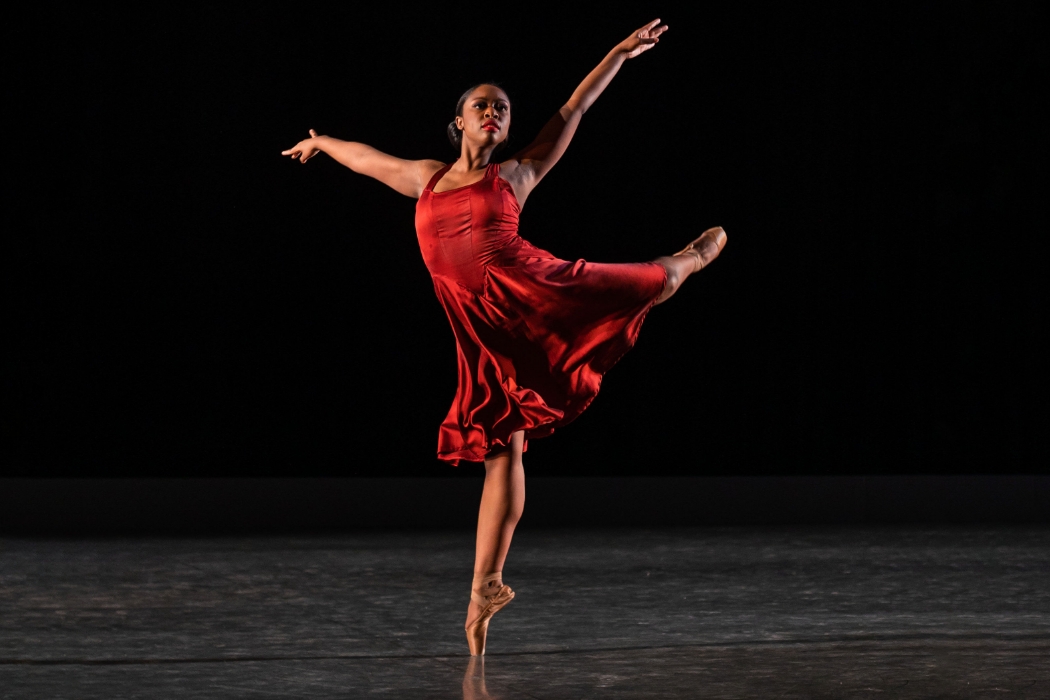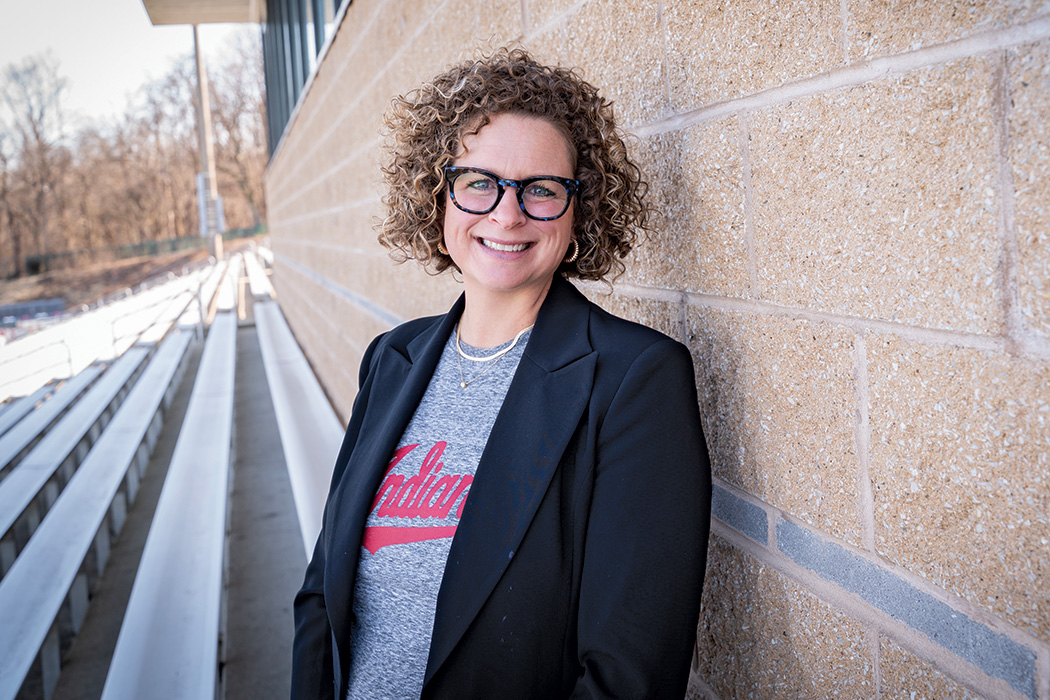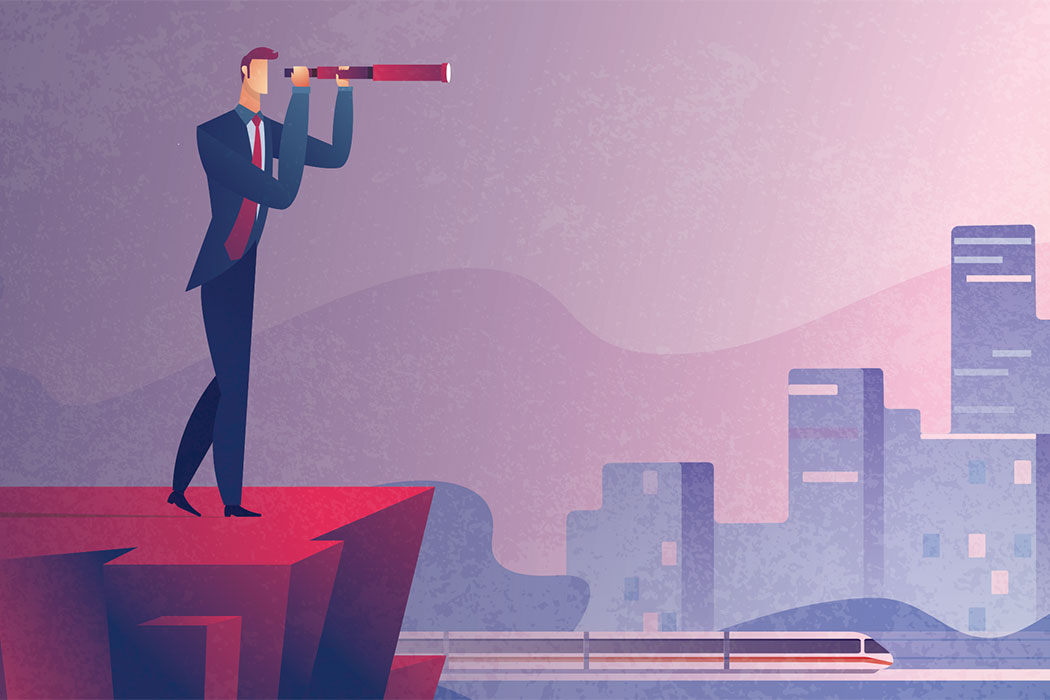IU Under the Sea
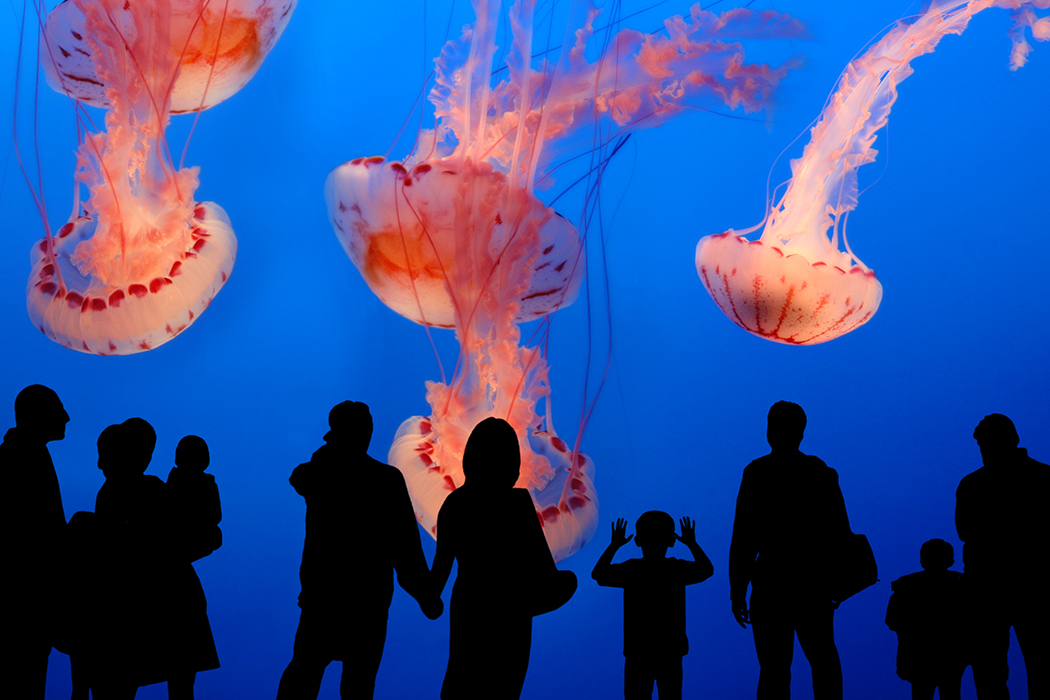
In the 1989 Disney animated film The Little Mermaid, Ariel traded her mermaid tail for legs. But we have a feeling that these four IU alums, given the opportunity, just might opt to be where the people dolphins are. Keep reading to find out what it’s like to work at an aquarium—with job descriptions ranging from swimming with belugas to maintaining a coral reef system.
Zach Ransom, ’09
Phillip and Patricia Frost Museum of Science
Miami
Former curator of animal husbandry
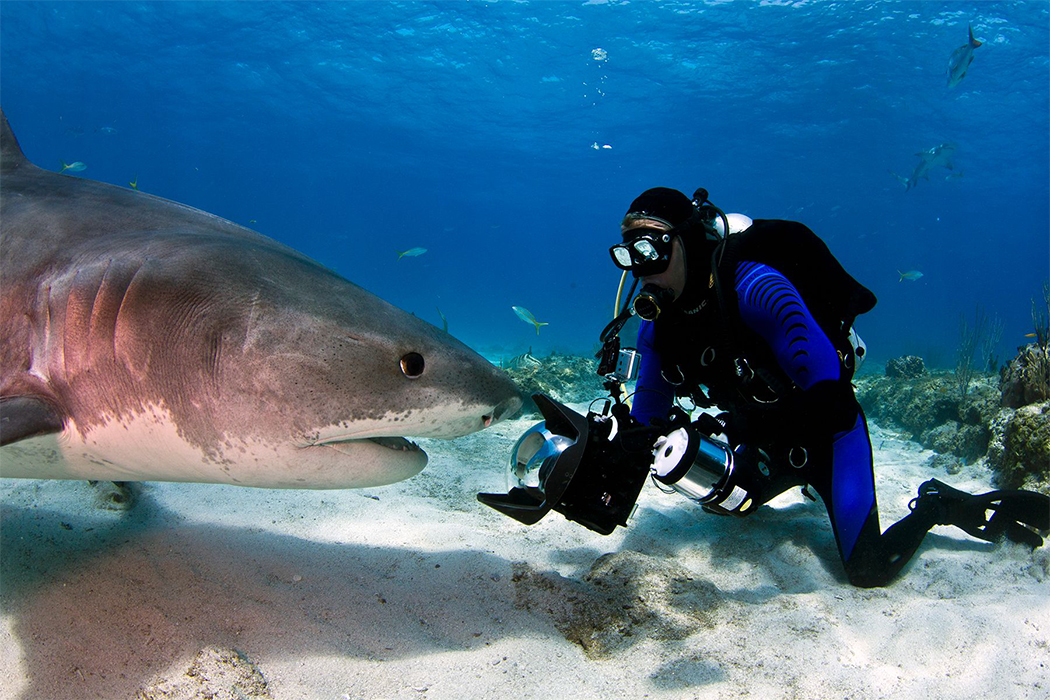
Can you describe a typical day at the aquarium?
ZR: I was responsible for the health and well-being of our vast living collection of plants and animals. I was also the museum’s dive-safety officer.
What are your favorite animals to work with?
ZR: I’ve had a fairly diverse career spanning several different public aquarium institutions; much of that experience was focused on husbandry and propagation of corals in aquaria. Some people may not think of the coral animal as terribly exciting, but I find the beauty and challenge of constructing and maintaining a successful reef system extremely rewarding. I’m also quite fond of working with sharks.
What drew you to sharks? What’s it like diving with them?
ZR: Believe it or not, the movie Jaws was the initial impetus for my fascination with sharks. I would scour the stacks of my local public library for every book about sharks I could find, take them all to a table, and page through them for hours. I remember staring at the grainy photos in awe of the animals, and the crazy photographer who would jump in the water with these monsters of the deep. Sharing the water with such an immense and powerful creature is thrilling for sure, but the experience is so much more than that. I feel completely calm and at peace in those situations. Eye contact is an important part of being in close quarters with large sharks, when you break your gaze, they often decide it’s safe to move a little closer. To capture these moments with my camera and share them with the world in hope of possibly breaking some negative stereotypes—that is the payoff for me.
Do you have a favorite memory from your career so far?
ZR: I was fortunate enough to participate in some coral genetics research on the island of Curaçao in the Caribbean with an organization called SECORE International, whose mission is to conserve coral reefs worldwide through education and restoration efforts. Part of the work involved collecting Elkhorn coral gametes during their annual spawning event—which for this species only occurs one night per year—so the stakes are fairly high. Being on the reef at night and witnessing a phenomenon that has secretly and silently occurred under the cover of darkness for millions of years was a profound experience.
Morgan Becker, BA’14
Georgia Aquarium
Atlanta
Former marine mammal trainer
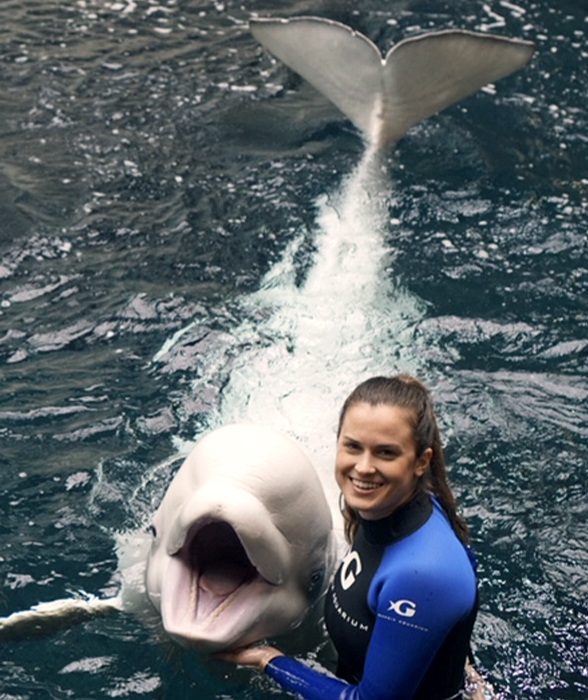
Do you have a favorite memory from your career so far?
MB: My favorite memory would be getting in the water with dolphins for the first time. It was such a rush, yet so relaxing at the same time.
How did your time at IU prepare you for your job?
MB: My diving safety officer opened the door for me in this field. I had amazing references from IU that helped me stand out.
Austin Schlenz, BA/BS’17
Miami
Field biologist
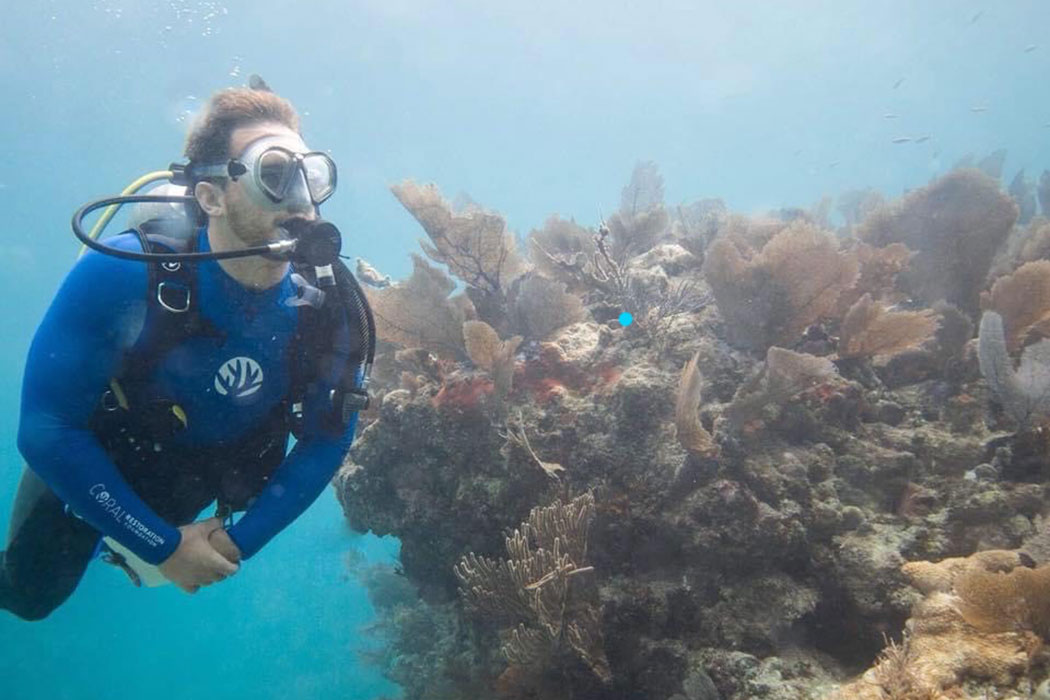
Can you describe your job as a field biologist?
AS: I’m specifically working as a biologist on the offshore team in the restoration and enhancement section of Miami-Dade County. Some of our big projects include maintaining and monitoring artificial reefs, managing a mooring buoy program, conducting various surveys to assess reef health and fish populations, removing marine debris, and preventing/treating coral disease.
Why did you gravitate toward coral restoration as a career?
AS: I think what drew me to coral restoration was the fact that corals are not typically the first animal people think of when they think of marine animals. They tend to be an afterthought, even though they are incredibly important. I feel like I’m making a direct, positive impact on our oceans.
Why is coral so important?
AS: One could argue that coral is one of the most important animals in the ocean ecosystem. They are the first line of defense again hurricanes and tropical storms as they dissipate wave energy and protect shorelines from damage. They provide shelter, food, and are breeding grounds for many animals. Even though coral reefs only cover about one percent of the ocean, around 25 percent of ocean animals depend on them. Coral also provides stability and structure to reefs, brings in tourism, and are even used in medical research.
What does coral restoration involve?
AS: The first thing most people think of is directly outplanting corals back onto the reef, but there is a lot more that goes into it. Restoration also involves testing various outplanting techniques to yield the best results, monitoring coral health post outplanting, maintaining a nursery of corals to outplant, researching and mitigating stressors that affect coral health and survival, and so much more.
How has your time at IU impacted your career?
AS: It wasn’t until the end of my freshman year that I learned about the Academic Diving Program at IU. Once I began diving, I knew marine biology was going to be the career for me. The program consists of several courses that help you develop both recreational and scientific diving skills. It focuses on training divers who are safe, responsible, and efficient. I went through the entire program, and every course I took made me so much more confident in the water.
Alexis Miller, BGS’13
Miami Seaquarium
Miami
Former marine mammal specialist
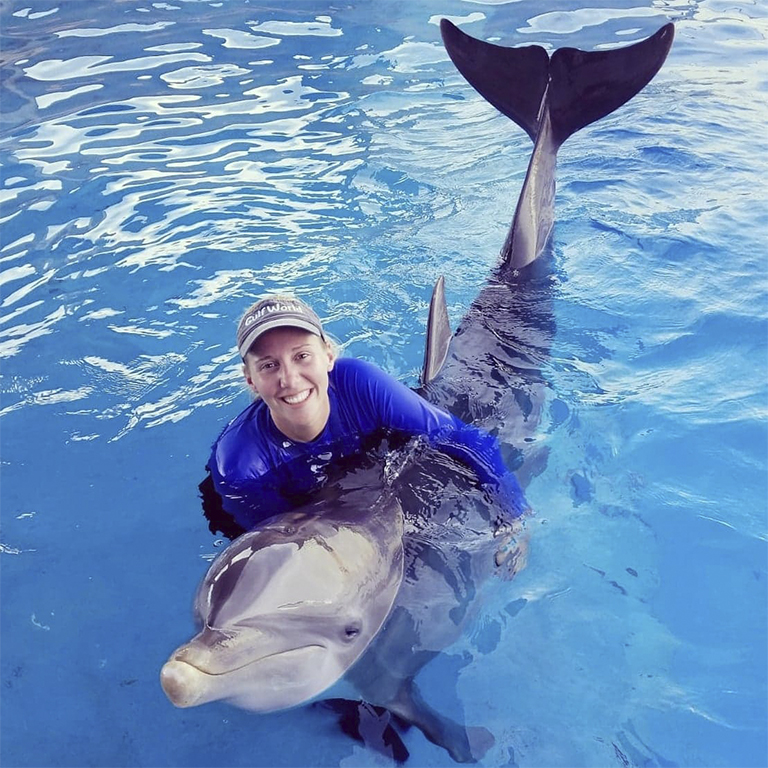
Do you have a favorite memory from your career so far?
AM: In 2019, I went back to Indiana for vacation. [On] my first day back to work, I had an in-water dolphin interaction program with guests. There were two dolphins in the water, and they went to the wrong trainers. When my dolphin was pointed over to me, she popped up and saw me—and squealed with what I hope was excitement. I’ll never forget that moment.
What are your favorite things to do during a play session with dolphins?
AM: Dolphins discover the world with their mouths and are super curious. Some of my favorite things to do [are] playing ball, free swimming, and floating with them after a guest program.
Sarah Hoback, BA’06
Newport Aquarium
Newport, Ky.
Animal care coordinator
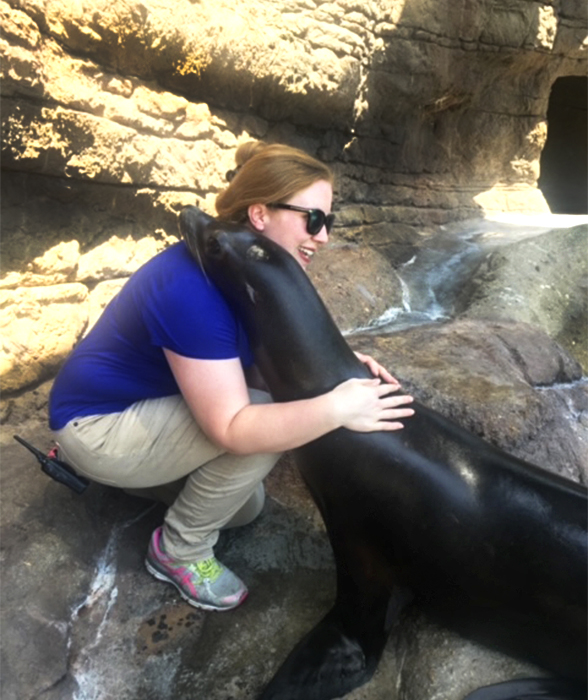
What does a typical day look like for you as an animal-care coordinator?
SH: Right now, my biggest job is to make sure our record-keeping system is up to date and that everything we do is in line with the requirements set by the state and federal government, as well as the Association of Zoos and Aquariums—the organization that accredits us. I do a lot of work in our water-quality lab—testing water to make sure everything is safe for the animals, and then working with the biologists to fix problems that arise. I’ve also had the opportunity to go out and do field work, I’ve assisted with surgeries and other medical treatments, and every now and then, I get to go hang out with the penguins.
What are your favorite animals to work with?
SH: Sea lions are pretty amazing. They’re so smart and that makes them mischievous. They work together, they get into everything, they’re very expressive, and they are, hands down, the most resilient animal I’ve ever encountered. Sea lions act in the ocean very much like a canary in a coal mine—they have been facing a multitude of problems out there for a long time.
Do you have a favorite memory from your career so far?
SH: Getting to help raise a penguin chick. I watched him hatch, I got to watch him discover the world, learn how to swim, and find his place in the colony. It’s a really special feeling to be able to build a relationship with an animal.
Is there anything people would be surprised to know about your job?
SH: Animal care in an aquarium is so much more than meets the eye. There’s husbandry, but there’s also plumbing, engineering, chemistry, etc. There’s so much that goes on behind the scenes that our guests don’t get to see. It’s also really collaborative. It’s impossible to know everything about every species so institutions often work together to solve problems and swap ideas.
Ashley Smith, BS’19
Indianapolis Zoo
Indianapolis
Marine mammal trainer
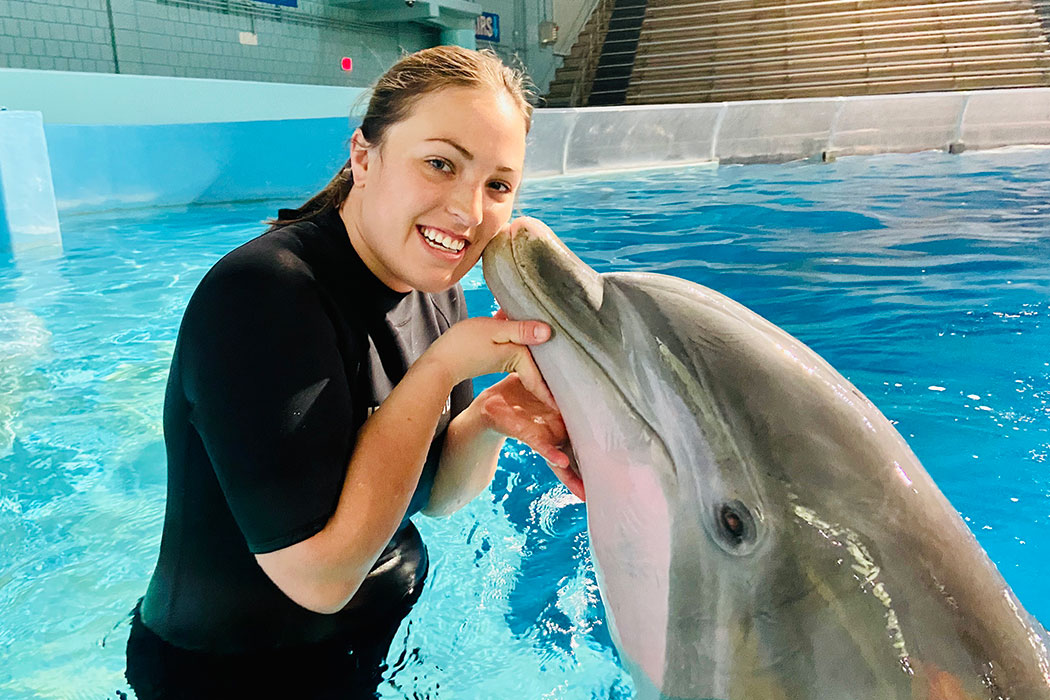
Can you describe a typical day as a marine mammal trainer?
AS: The animals I work with change day-to-day. I could be working with dolphins one day and walruses the next. Some days I may come in early to prepare the fish for the day, and some days I stay late to observe the animals or do a dolphin presentation. But for the most part, our days consist of feeding and enriching the animals, and providing educational programs for guests. These programs allow them to see these animals up close, and hopefully inspires them to protect their environments.
Is there anything people would be surprised to know about your job?
AS: Animal keepers and trainers are responsible for a lot of the exhibit maintenance. The staff in my department is SCUBA certified. We dive in our animal habitats to clean and maintain the exhibits for our animals.
Are the dolphins in the habitat while you’re cleaning?
AS: The dolphins will be moved out of the pool that we are cleaning for their safety and ours; however, we can see them through the gates underwater and they usually watch us as we clean.
If you enjoyed this article, check out IU at the Zoo, which interviews six alumni who work with some of the world’s most endearing animals, including Fiona the famous hippo.
Tags from the story
Written By
Samantha Stutsman
Samantha Stutsman, BAJ'14, is a Bloomington, Ind., native and a senior content specialist at the IU Alumni Association.
